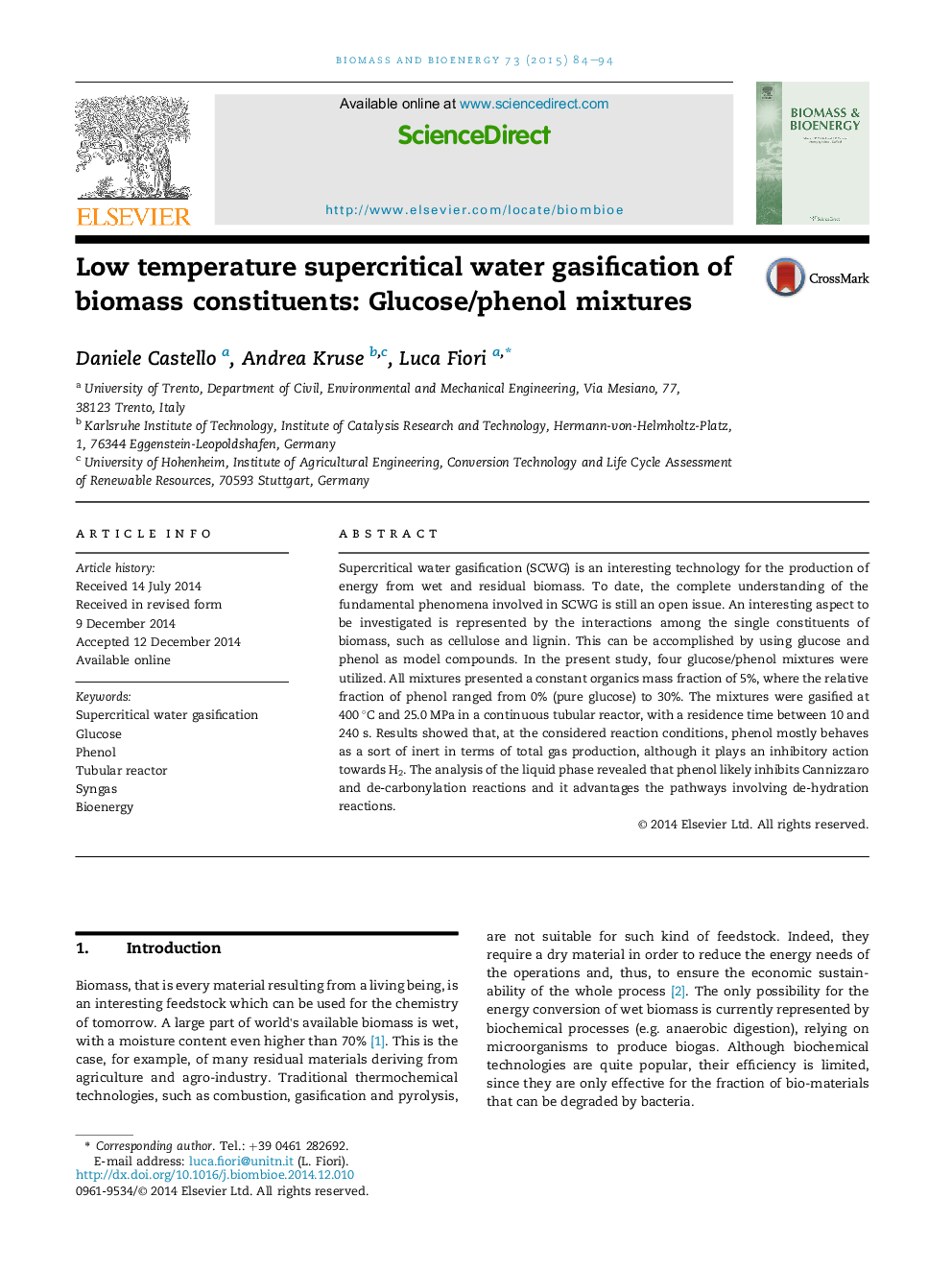| Article ID | Journal | Published Year | Pages | File Type |
|---|---|---|---|---|
| 7064017 | Biomass and Bioenergy | 2015 | 11 Pages |
Abstract
Supercritical water gasification (SCWG) is an interesting technology for the production of energy from wet and residual biomass. To date, the complete understanding of the fundamental phenomena involved in SCWG is still an open issue. An interesting aspect to be investigated is represented by the interactions among the single constituents of biomass, such as cellulose and lignin. This can be accomplished by using glucose and phenol as model compounds. In the present study, four glucose/phenol mixtures were utilized. All mixtures presented a constant organics mass fraction of 5%, where the relative fraction of phenol ranged from 0% (pure glucose) to 30%. The mixtures were gasified at 400 °C and 25.0 MPa in a continuous tubular reactor, with a residence time between 10 and 240 s. Results showed that, at the considered reaction conditions, phenol mostly behaves as a sort of inert in terms of total gas production, although it plays an inhibitory action towards H2. The analysis of the liquid phase revealed that phenol likely inhibits Cannizzaro and de-carbonylation reactions and it advantages the pathways involving de-hydration reactions.
Related Topics
Physical Sciences and Engineering
Chemical Engineering
Process Chemistry and Technology
Authors
Daniele Castello, Andrea Kruse, Luca Fiori,
